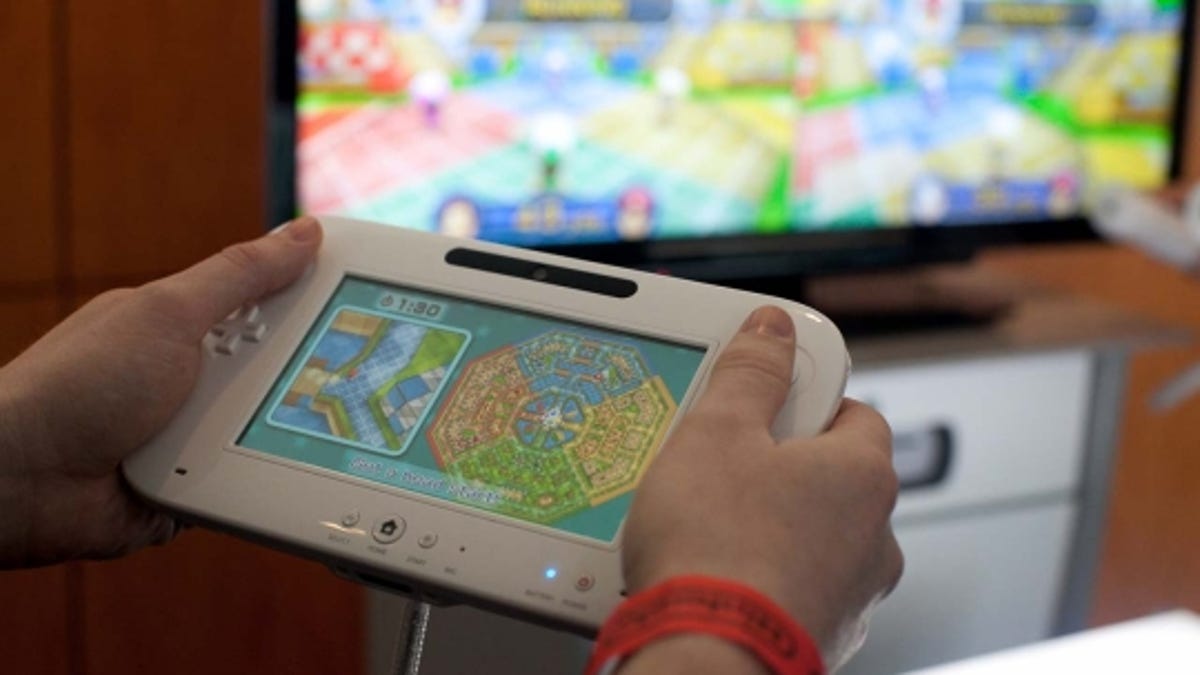E3 2011: Will 2012 be the year of the second screen?
Nintendo's Wii U might be the beginning of dual-screen home gaming, and it might not be alone.

Among all the myriad events and announcements of E3 2011--some bombastic, some evolutionary--the unveiling of the Wii U was one that, no matter who you asked, generated some degree of mixed feelings. As gaming press and players, what we saw from Nintendo's future console controller produced sensations of excitement, skepticism, ambivalence, and intrigue.
That might be due partly to the expectations that Nintendo set for itself. The Wii was a new experience, a new idea. It also might be due in part to Sony's PSVita stealing some of the spotlight a day before; the handheld device actually has many of the same control mechanisms: touch screen, dual sticks, cameras, motion control.
What might be overlooked, however, was the simplest truth about the Wii U: it's a second screen for a home console. It's an idea that's never been done before outside of multiple-monitor PCs, or Nintendo's own DS and 3DS handhelds. In fact, technically, in another year or so Nintendo will exclusively be a second-screen game company.
Third-party discussions and demos of the Wii U's capabilities address augmented reality and motion control, but more than anything else, developers seem curious about the second-screen element of the Wii U. While Nintendo's console might seem to be standing alone with the idea of second-screen gaming, I wonder whether they'll have company in 2012 and beyond.
Related links
• Wii U: hands-on
• Q&A on the Wii U: Shigeru Miyamoto
• Hands on: Disney's Second Screen
• E3 2011: Complete coverage
I've been skeptical of second screens. Disney's Second Screen apps for the iPad have
attempted the same secondary-readout idea for use with Blu-rays.
Even though the Wii U tablet controller doesn't look like it's meant to ever function far apart from its base console, its employ as a continuous second screen for the unit opened up intriguing possibilities in my mind as I boarded my plane back to New York after the E3 show. If you imagine the Wii U in terms of a PC gaming experience and a second monitor, albeit a lap-based or handheld one, viewpoints or advanced strategy commands make sense. The Nintendo DS has dozens of games that successfully found dual-screen solutions. For the DS, two screens weren't a gimmick after all, like we may have thought in 2004. Similarly, motion gaming on the Wii ended up, for better or worse, being emulated on every major game platform. Perhaps Nintendo might be on to something again.
Of course, using that Nintendo second screen means, for the time being, we put aside our "third screens"--our phones--for a little while. Three screens are too much to manage. At least, I think so. PC gamers would beg to differ.
Those who laugh at the purpose of a second screen--perhaps, you say, build that interface into the single screen TV interface instead--might forget that the move to HD from SD offered a leap in pixels, adding much-needed display area for games. Maybe the second screen for games will achieve a similar goal, adding pixel real estate that's now being taken up by ever-more-detailed HD games. Perhaps it's expansion.
Second screens could emerge elsewhere, easily. What's stopping Sony from making the Vita, with its 5 inch screen, a second screen for the PS3? It might already be on deck. Could smartphones and tablets become second screens for TV or PC games, too? Some already are: Firemint's Real Racing 2 will support second-screen mirroring on an HDTV via AirPlay. The iPad could evolve into a second-screen game device for Apple, perhaps in conjunction with the Apple TV, or all on its own.
The biggest lingering question I have after E3 2011 is whether the Wii U is an isolated concept, or a bellwether for the future of gaming at large. Would you play games using two screens, and do you find it any more or less exciting than the rise of motion games? Can the two coexist easily? Let us know your thoughts below.

